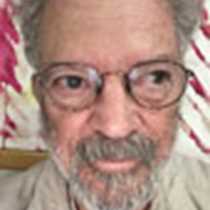This morning, we are between continents. To the south is Antarctica. To the north is South America. We are in the famous Drake Passage, heading northward. The Drake is rather reasonable this morning with little to no wind, just some residual swell left over from days past. Today can be a day of rest and reflection…if you want it to be. There is plenty to do with a full schedule of lectures, fabulous meals, birds to be watched, and images to be made.
I choose to reflect on the day while working on my lecture for tomorrow. Yes, there were plenty of penguins, including an emperor penguin. There were whales: humpback, killer, and minke. There were seals, true and otherwise: leopard, Weddell, crabeater, and fur. Ha! And magnificent icebergs, calving glaciers, sea ice, and snow. We had fantastic skies and Zodiac tours. However, my focus is a little tighter, a little closer. I look at things growing on land.
A single image of a small part of a cliff at Paradise Bay presents a microcosm of what grows on the land of the Northern Antarctic Peninsula. In the image, about a foot wide, there is a flowering plant (Antarctic hairgrass), a moss, and several lichens. The Antarctic hairgrass is one of two naturally occurring higher plants on the continent of Antarctica. The moss, perhaps one of the haircap moss (it’s difficult to tell from a Zodiac), is a pioneer and can grow almost anywhere. It does not have true roots, so the surface of a rock is a fine place to grow. The moss traps dirt and debris, providing a habitat for the grass. And last but not least are the lichens, at least three species in the image. The lichens help, a little, to break down the rock, and they add nutrients to the environment with their death. What is important, to me at least, is to realize that the main source of nutrients to the system, almost the only source, comes from the sea, usually in the form of guano. Without the birds, there would be almost nothing living on the land in Antarctica. What a simple but precarious place indeed! Treat it well.







